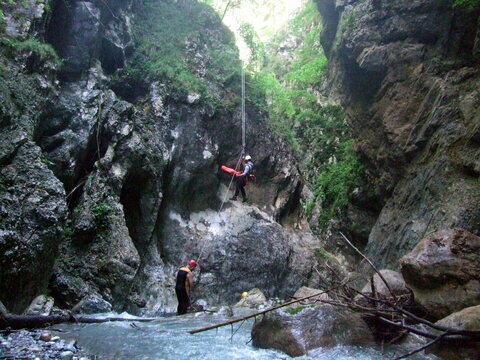Canyoning Rescue for Professional Guides

Minimal Requirements for Medical Training
- Recommendation for topics to be covered by courses for professional guides.
- Canyon guides need to be technically competent.
- Medical instructors should be suitably qualified and experienced in both theoretical and practical aspects of in canyon rescue, which includes technical climbing aspects as well as specific problems associated with rescue in water.
- Instruction should last at least two days and should be 80% practical work
Water is the most important danger in canyoning rescue
It is essential that each guide know the principals of canyon rescue, including helicopter rescue. They should know how rescues are organized in the area where they are working.
The Following Topics Should be Trained:
- Assessment of the situation. Check of the rescuers own safety
- Ensure casualty is in a safe situation where initial assessment can be performed
- Primary survey: Check ABC DE
- Basic Life Support: Cardio- pulmonary resuscitation
- Secondary survey (full body examination of the patient without removing the neoprene suit, if possible)
- Planning of the rescue action: Can the injuries be treated on site and the casualty evacuated by the canyoning group or should the guide call for help
- Near drowning situation: Airways free? Breathing ok? Consciousness of the patient?
- Hypothermia: Heat loss can be very rapid, especially in running water. Even in a neoprene suit, hypothermia can result within half an hour. How can the casualty be hold outside of the running water during the preparation of the rescue action? (e.g. hammock)
- Assessment and emergency treatment of fractures and dislocations
- Assessment and emergency treatment of wounds
- How call for help? (professional rescue)
- Management of the situation of the other members of the group
- specific rescue situation at night